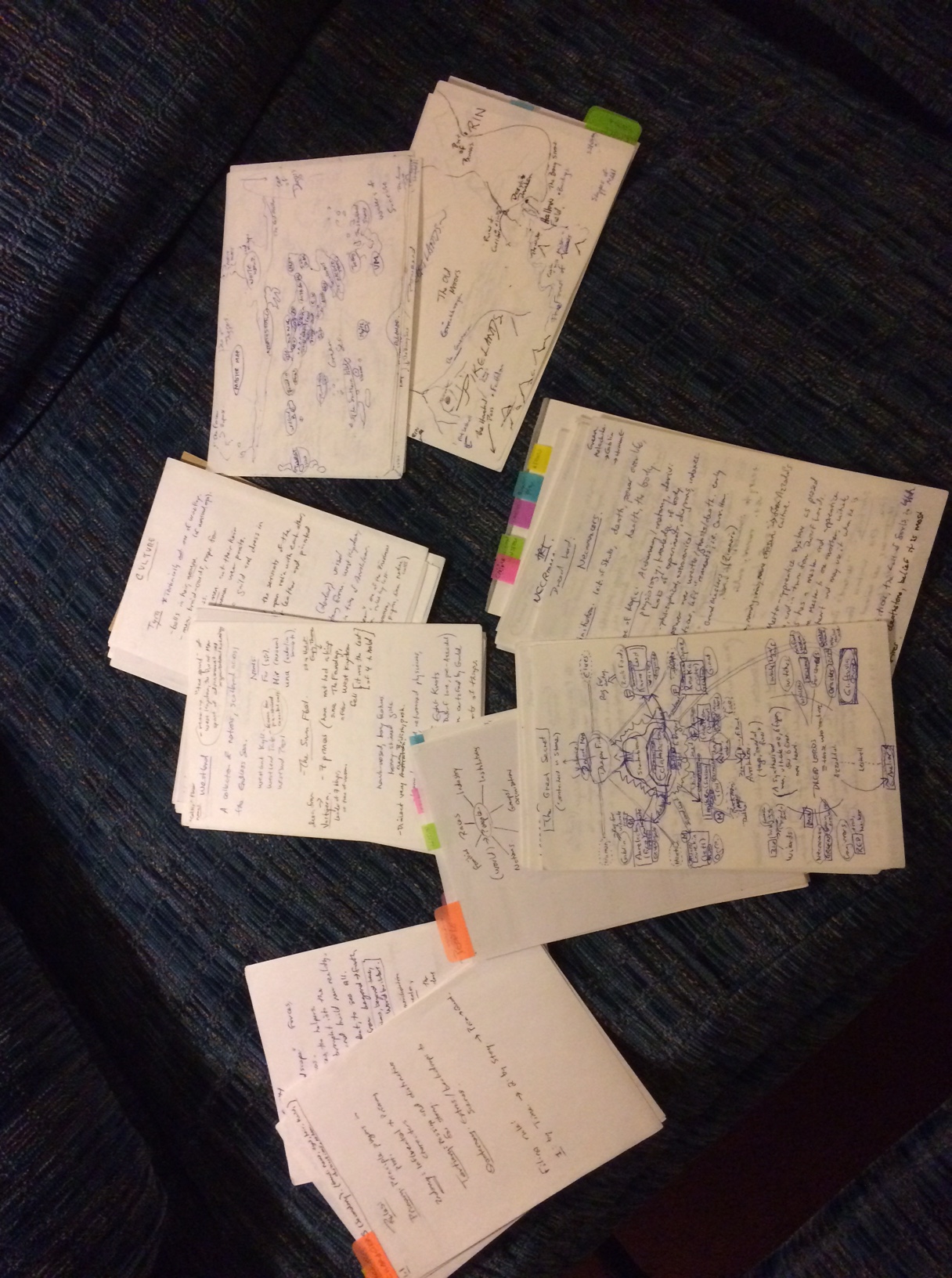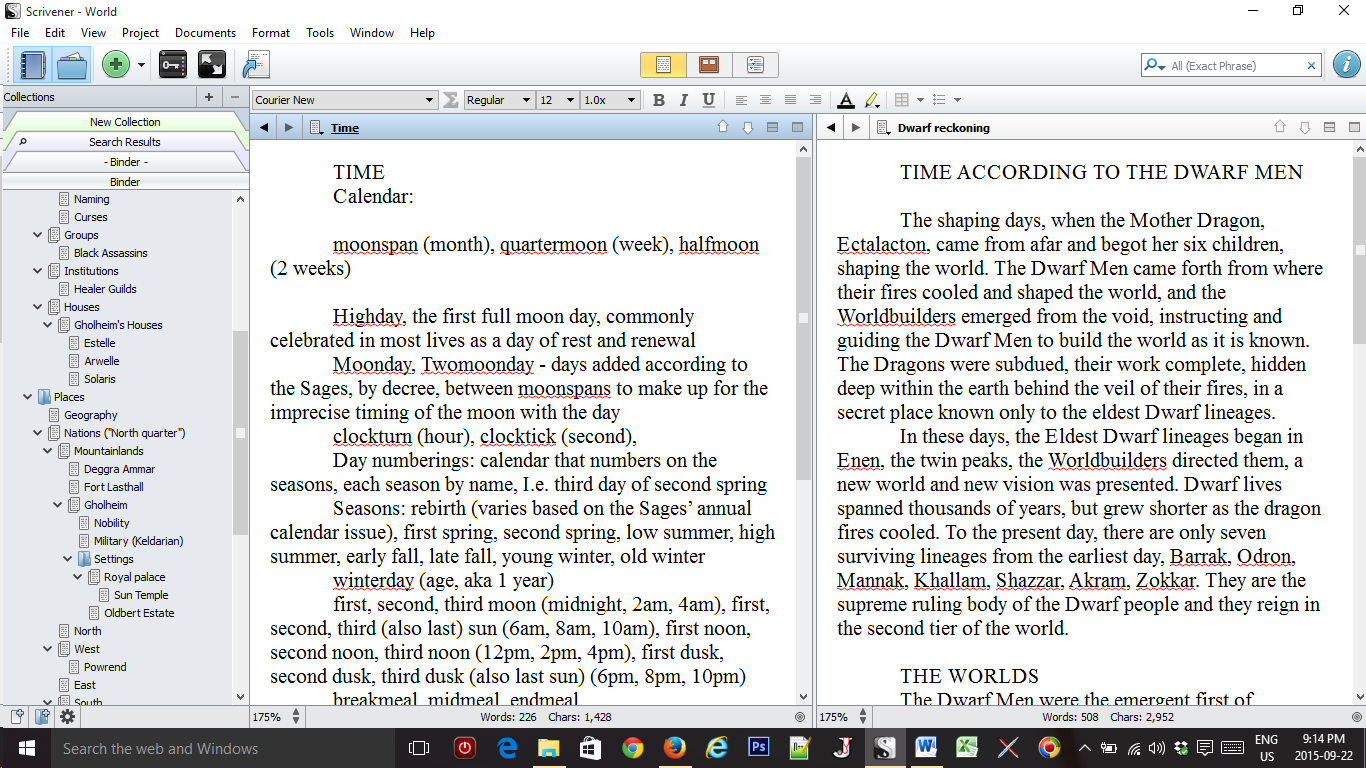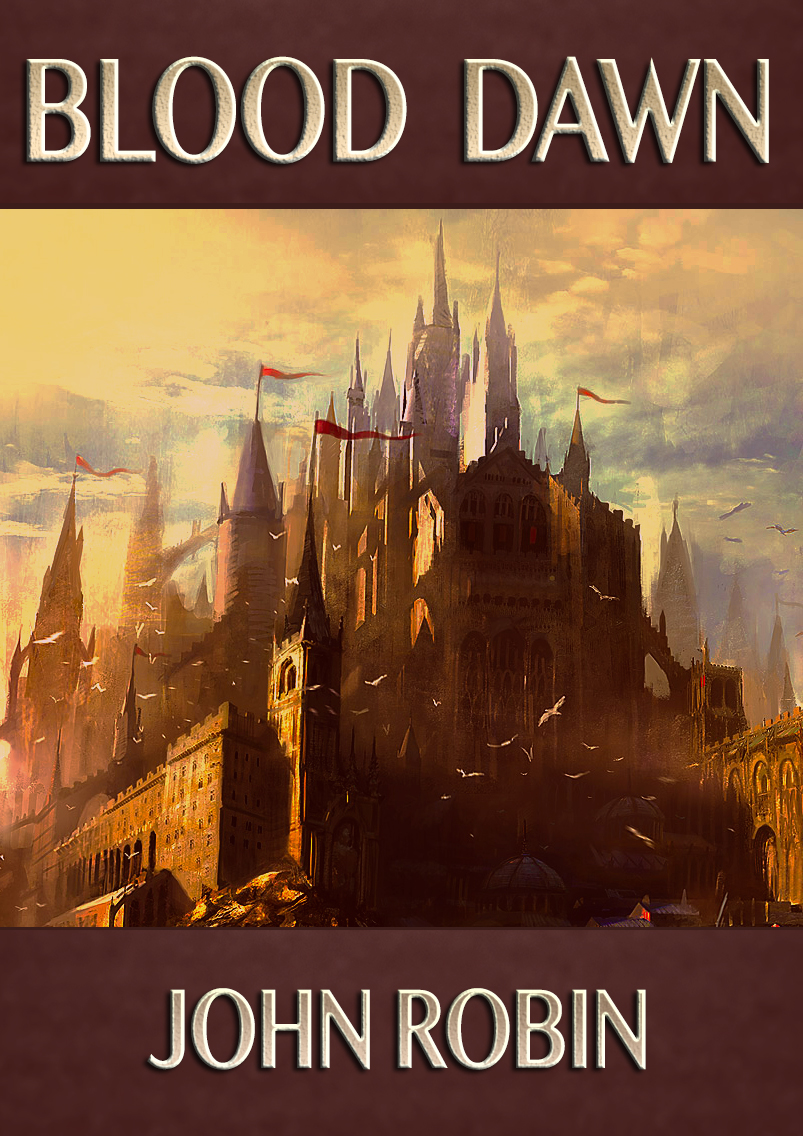Guess what?
Today I thought I’d surprise those of you who have been following the World Builders series by … being my own guest.
This is not based in narcissism. The reason I’ve chosen to jump in today is because I realize that, although I’m excited to have three guests a week sharing the perspectives on a topic I’m so passionate about, I haven’t done a personal blog post in a long time. Rather than just a break in the schedule, for those expecting something new today, I thought I’d combine the best of both worlds: so here’s my next blog post and here’s my next World Builders — combined!
Without further ado, welcome … John Robin (back to his blog)!
 John Robin is the man behind the curtain who runs this blog. The nice thing about being his own guest on his own blog is he can send you to the ABOUT page (click here) where you can read his bio.
John Robin is the man behind the curtain who runs this blog. The nice thing about being his own guest on his own blog is he can send you to the ABOUT page (click here) where you can read his bio.
Otherwise, you probably already know him, and can read on to find out more about how he approaches the process of world building.
And here it is: my crack at the world building questions I’ve asked now more than a dozen authors to answer — and questions which I’ll look forward to resuming with dozens more who are presently booked right up into December on my schedule.
What is the appeal of world building to you? How does it compare to the importance of character and plot?
Keeping in mind that my love of fantasy began with a childhood obsession with Tolkien’s maps, I’d have to say world building is the very reason I write epic fantasy. Only in later years, especially after I learned about plotting and story structure, did I lean more toward character and plot. But in the beginning, I accumulated a pile of countless abandoned manuscripts (as high as my adolescent knee), all because I would imagine a setting, or a world idea, then jump in right away with the story that brought that place to life.
It might seem wasteful, but the result was my fantasy world grew and grew a bit like a scrap yard. To this day, I wouldn’t say I have an exact fantasy world per se, only that I have piles of ideas that have been created and abandoned, and refitted and redesigned, and every time I come to the story I draw from them. It’s actually quite liberating having a fantasy world with such malleability, both because I’m not limited to new creative twists and because I constantly encounter ideas and places that have been real to me since I was a dreamy-eyed teenager.
But story comes first, and character and plot is at the heart of story. I had a hard time learning that with my last novel, and the story suffered for it. I spent hours filling out sheets on settings and then nations, cultures, even a chronology, and these notes gave me story ideas which I tried to force-fit into the story. Well, that was a disaster, though I didn’t realize it until I got to the final hundred pages and everything started to fall apart. All those prompts I’d pinned in my document – like musical notes I had to hit because that was the way to orchestrate all the world details as I’d seen them when I’d created them – they detoured the story. Rather than focusing on the story – built on the natural plot elements of character arc like desire, obstacle, problem, resolution – I focused on something that is realistically the sub-structure of story.
Story comes first, but of course now, though I’ve learned from a painful lesson (who doesn’t weep over an abandoned story that they spent two years of their life trying to perfect?), I’ve come to understand that world comes from story. World is as much a part of story as character. However, it’s important to orient properly to its role. It is an emanation of the story world, and as such, the story will dictate what the world needs.
World building, for me, is more a process of keeping track of this list of revelations that the story shows me, both in the planning, drafting, re-planning, and revising stages. Being a good world builder, I think (and this is based entirely on my unique process), is about being a good organizer. So after all these years, I’m back to where I started with loving an imaginary world and getting to create it and enter it; only, I’ve learned from lots of trial and error experience just how to do it so that story will hold together.
What aspects of the world do you have to figure out before you start a story? What do you allow to unfold as you write?
Nothing. Everything. Somewhere in between.
Seriously, this is a tough one. Realistically speaking, you can spend your lifetime making a world. There are people who do this for a hobby. Dungeon Masters or gamers love the idea of making worlds. Stephen Erikson spent a long time developing his world before writing Malazan.
But you can also spend no time at all making a world and come up with something as cohesive as life on Planet Earth as we know it. I think (from what I’ve read) that George R. R. Martin, who I’d argue has an extremely believable and cohesive world, follows this process. He’s a complete discovery writer, delving into character stories organically, letting the story reveal itself as he goes. But he has a brilliant and organized mind, remembering what he’s come up with, and regurgitating ideas for the world that make sense. I think if you have the kind of mind where you can invent your world, and such invention follows a sophisticated understanding of reality and what reality is (for example economic systems, politics, history, sociology, culture – basically, if you’re ultra-worldly) then what you come up with when you write will be an emanation of this. If you have your head in the clouds and think that emus are related to goats, then this method might not work well for you.
Whether you choose option A or option B, whatever you do, it’s all about questioning what you come up with after you come up with it, be it while you’re writing, or later in revision. For myself, I make everything up as I go along, but I have in the back of my mind that scrap yard I mentioned above, so many things to draw from rather than having to go completely in the dark. That said, sometimes despite having this scrap yard at my disposal, I find that the absolute best, concrete world details that come to the surface are made up on the spot – they’re the details that the story wants, and to the reader that part feels more real, and consequently the world feels real, because it brought the story to life.
To me, regardless of how much I plan something out beforehand, the story trumps all, and for this reason, I do not invest in world building except as it relates to and emanates from the storytelling process.
Do you have a technique for keeping track of world building as you go? How do you ensure your material is easily retrievable and easy to modify?
I should describe my life before Scrivener and after Scrivener, from this point denoted BS and AS.
My BS life was tragic. In fact, the front room in my house is cluttered with so much paper because of all the BS misfortunes. Notes, notebooks, disordered ideas, new ideas, stuff scribbled in the margin of abandoned stories, maps, doodles, even an archive of napkins from when the extra-long wait at a restaurant inspired a great idea.
My last novel, being the third practice novel, was also written BS. In this case, my BS methods had become more sophisticated. I’d discovered the usefulness of 6”x4” sheets of paper that I could collect like index cards and organize into sections. Whenever I came up with a character, I created a sheet for that character and inserted that character in the tabbed group of sheets for characters. If I named a nation, then I created a sheet for that nation, and if it was my first nation, I created a new tab and from that point forward new nation sheets would go there. If I created cities in a nation, then I created a smaller tab within the nations directory and inserted that there so that I could collect growing notes within. This was a handy way to get the notes I needed as the notes started to grow, but the problem was that by the end of the 2 years I’d spent on my last novel, the notes were growing so big I needed to buy three sleeves and I had to transport them everywhere. Worse, I worried what would happen if there was a fire or if I lost them.

The bridge between BS and AS — organized notes, that really should have been digital.
When I finally decided to put aside that third novel and move onto something else, I was done with BS. Someone had advised me to try Scrivener, and since I was storyboarding and scribbling everything on notes, I figured why not jump right in. And my AS life began.
What I love about Scrivener is it allows me to do what I could not do with hand-written notes: duplicate, edit, create and destroy directories with a mere click, etc. It also allows me to approach world building in a way that doesn’t detract from the flow of storytelling, in fact in a way that complements storytelling; it also allows me to organize as I need, quickly retrieve, and easily modify.
Describe your world building method. Do you have forms that you fill in? How do you organize your notes? Do you use a wiki or some other software?
I just elaborated on life BS, so it’s relevant here to go more into detail of exactly how I use Scrivener for world building.
It might be more useful to describe how the process evolved in order to describe how it works today; and to keep in mind that this process continues to evolve as it grows.
It all started with what I called a “tail”. I wrote the first chapter of Blood Dawn in a simple note in Scrivener. As I wrote the chapter, every time I came up with a detail – be it about character, setting, or plot – I scrolled to the end of the chapter and put it there in point form. By the end of the first chapter – Rena’s opening weaving scene – I had a reasonable sized list.
I moved on into the second chapter, Manwen, and cut and pasted this tail into the Manwen file. But I found that the Manwen details added into it made things hard to keep track of because the list was getting long. Also, I didn’t like that I had to scroll down all the time. So, I discovered something awesome about Scrivener: you can create another note and click between it and the story file! Those of you who use Scrivener know what I’m talking about.
Wow, such a simple idea, but it revolutionized how I approach story. Suddenly, I had a separate file for that tail (which I called “tail”), and now as I wrote the rest of Manwen, and moved on into Skippy, I just had to click on “tail” in the left menu, whenever I wanted to either cross-reference a detail, or when I wanted to add something based on something I’d used in the story.
Great idea, but that list grew long. Disorderly. Soon I had as much trouble as I had with having to scroll down to the end of the chapter to get at it, since I was combing over pages worth of disjointed information. Initially, I created headers and organized the information in there, condensing it. For example, I mentioned “clockticks” and “clockturns” and my convention for every 2-hour increment of the day is to call it in first, second, or third moon, sun, noon or dusk. I had mentioned these details in several chapters, but as I created the “TIME” category, I started to organize relevant details there.
This helped, but didn’t remove the problem of scrolling and having to comb over the document to find, say, the “TIME” directory to either quickly check what time of day (in our clock) second sun is, or to add, perhaps, a note that a month is a moonspan. So, I discovered another GREAT thing about Scrivener: you can have as many notes as you want and you can organize them however you want.
I cut my tail up into documents for each of the headers in it, and named the file after the headers. So now, instead of having to scroll down to “TIME”, I had but to click the “TIME” file to jump in there and check. Over time, I developed so many files for the different aspects of world (including notes for character and story structure notes), that soon I had to scroll a lot on the menu of all the files I had to get at the one I wanted. So I created a new Scrivener file, and downloaded a great program called Window Tabs, which displays little tabs at the top of the screen for the multiple Scrivener files I open – I have but to click between them to jump from manuscript to world file. This allowed me to organize the world file how I needed it.
Now, as I continue to add details, I split off relevant categories or subcategories once there is enough information to justify it. I like the way it’s growing, but in time I’ll soon need to split the world file up because it’s becoming huge – the length of a full novel already!

A screen capture of my world building notes. You’ll see on the left, I have my menu showing all the different notes. On the right I am using split screen so I can keep two different notes open at the same time.
Are you modifying your world building process? Do you have any particular things you’d like to improve on?
I mentioned that the world file is becoming large. I’m also running into the problem of duplication: for example I might mention a Dwarf culture custom in the Dwarf history file, but I might also mention it in the background notes for Deggra Ammar (which was built as the new seat of power for the Dwarf lord Bain the XXXXIII). It would make more sense to just have one file for the entry and have that mention link to it.
I realize this is exactly what a wiki is. I’ve experimented with programs like Linked Notes and Wikipad, but I find them unfriendly. As a rule, I don’t want world building to interfere with storytelling, and although I have a bit of hunting to do sometimes with my growing world file notes, realistically it still works because I can always search for an instance of what it is I’m looking for with the “find” feature.
I’ve also aspired to add a world building day to my weekly writing routine. Right now my week looks like this: Sat/Sun (sometimes Monday, if I still haven’t hit 20 pages), write more draft. Wed, revise based on my editor’s notes on what I just wrote. Other days: edit (and lately, promote Blood Dawn and rarely, if ever, sleep). I like to remind myself that I’m aspiring to be a full-time author and one day I will not be bogged down with editing projects to stay afloat and make a living, and all the hard work I’m doing on promotion can be lifted a little if I can hire a team to help with my efforts. I aspire to focus more on writing, and that would mean one of the days in the week – I’ve got my mind on Thursday since it makes sense to segue into world building after I’ve been revising – I can spend world building / note building.
That’s my hope, but I can say that when I am finished Blood Dawn’s draft this November, I’ll spend about a month cleaning up my notes. This means creating better headers and organization, and trying to get rid of some of the duplication. The process of revising Blood Dawn for early 2016 will also be a great time to look at how I world build, and maybe, just maybe, I’ll discover how to make a wiki that isn’t too much of a hassle.
Regardless, I’ll keep it up. There’s something fun about creating precarious order in the midst of utter chaos. In fact, it sounds a lot like life, and I’m all about exploring what it means to be human, both in story and in how I bring it into being.
Now, for those who don’t know about it, here’s more on my epic fantasy book, Blood Dawn — the fruit of the world building process I was happy to tell you about today:
 A god-king’s dream of immortality has all but faded in what remains of his shattered empire. Rena, a weaver, will soon discover that her skill with cloth is more than it seems, for she is the god-king’s long lost daughter, and as such has inherited his abilities. Will she be able to master her magical gift to win back her father’s throne? Or will the empire remain one of darkness and corruption?
A god-king’s dream of immortality has all but faded in what remains of his shattered empire. Rena, a weaver, will soon discover that her skill with cloth is more than it seems, for she is the god-king’s long lost daughter, and as such has inherited his abilities. Will she be able to master her magical gift to win back her father’s throne? Or will the empire remain one of darkness and corruption?
Blood Dawn is an epic fantasy novel that is currently funding on Inkshares. Go check it out! You’ll find a short trailer, an audio recording of the opening, an opportunity to win a $100 Amazon gift card, and just what it means to become a DRAGON in John’s story world.
Inkshares is a crowdfunding publisher who chooses which books to publish based on whether enough readers have shown interest in them. Think of them as the big publishers (i.e. Tor, Dawn, Penguin) meets Kickstarter. Instead of looking for an agent and selling a book to in-house editors, authors must first raise funds before Inkshares decides to publish their books. Successful projects have been reviewed in the NYT, US Today, and Washington Post, and have been distributed to numerous bookstores including Indigo and Barnes & Noble.
If you enjoyed reading this, please be sure to follow this blog for more great interviews (I promise I will only hijack this blog series ONCE), and connect with me in the following places:
Twitter: @johnrobinrt
(https://www.twitter.com/johnrobinrt)
Facebook: https://www.facebook.com/john.robin.904
Facebook like page for Blood Dawn: https://www.facebook.com/blooddawnproject

